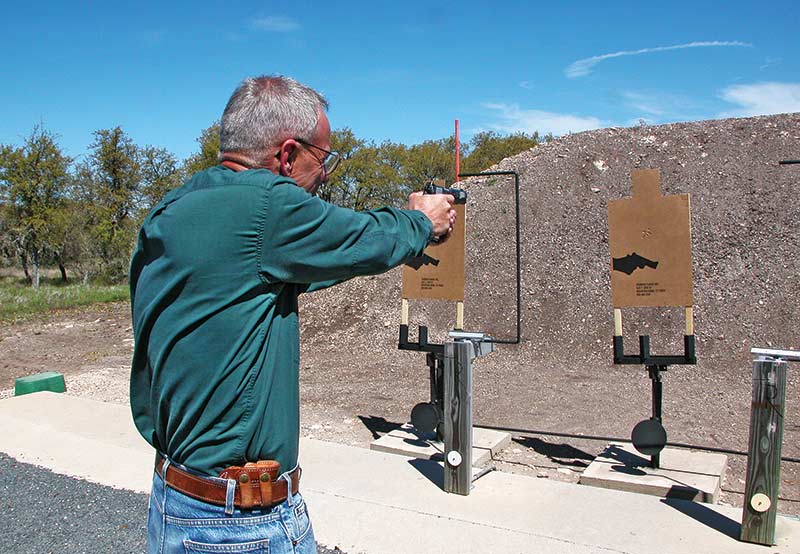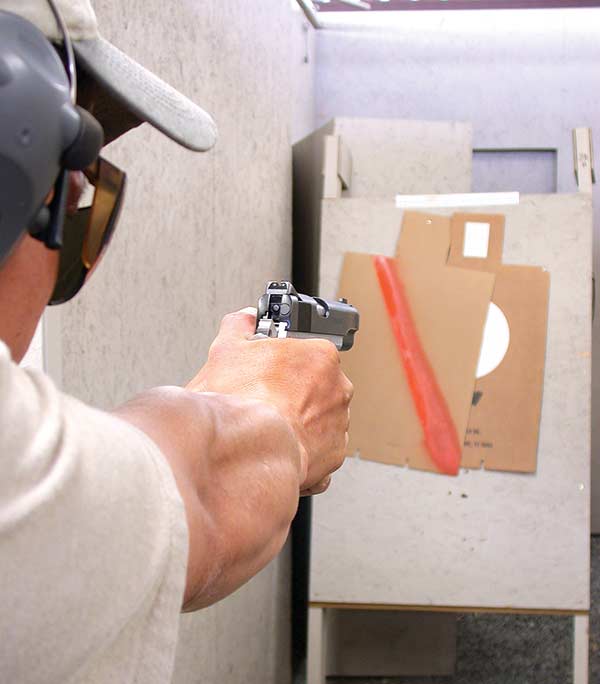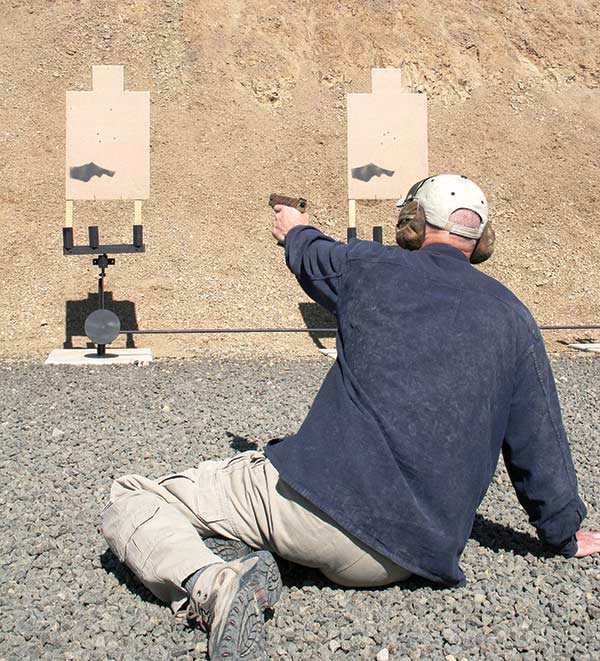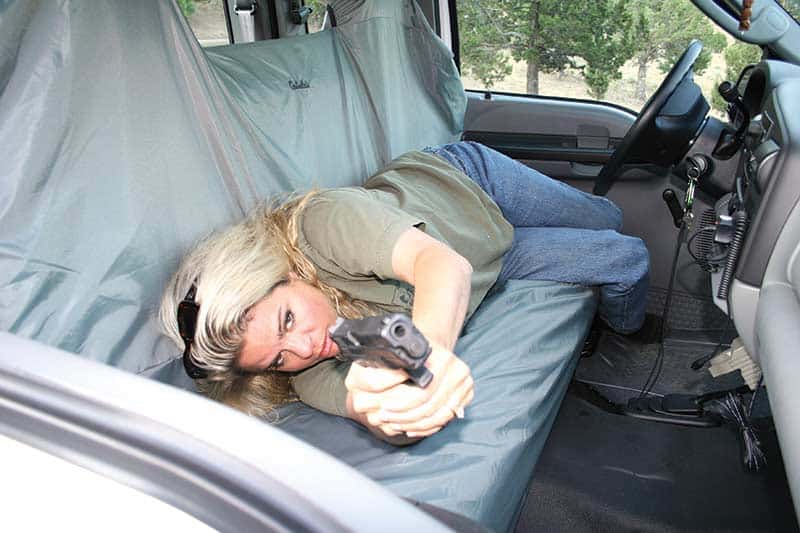The Double Tap
Or Is It A Trouble Tap?
In the quest to help or guide shooters to a point where they have a chance to survive a gunfight, some interesting techniques have been developed over the years. The issue at hand: Are the drills we practice really helpful or in fact, might they be harmful? Do we truly understand where they came from and what their intended use was or is, if any?
Training techniques have come and gone, vertical tracking, tactical center of mass, shoot for the head only, shoot to wound, point shooting, instinctive shooting, aimed fire et cetera. Some have merit and some don’t, but in the end it is mostly a personal choice based on perception and less often on knowledgeable experience. Some of these techniques have interesting points about what we think will happen in training and what really happens when we maybe use them on the street.
The Hammer
Arguably descriptions of a “hammer” may be the placement of the sights or muzzle on the target and the operation of the trigger at the cyclic rate of the pistol. It is generally construed to be two shots. Both are delivered to the same target and of course as quickly as possible. The thought is one sight picture and two shots. One theory may be to do this type of manipulation at very short, almost muzzle contact range to break contact with an imminent threat. For almost everyone I can think of skill-wise, the range to target will be three yards plus or minus and probably no more than five yards. It could be accomplished by one hand, but a mighty hand it should be! If two hands were used the best results would be achieved.
Split Hammer
A split hammer is a weird bird and accomplished well by very few in my experience. A split hammer almost always would require the use of both hands and short range as the split nomenclature comes from the act of engaging two targets close together at very short range. When the action commences the shooter will run the pistol at cyclic rate striking one target and then pulling the muzzle to the second target while the pistol is in recoil so the second shot is placed on the second target as the pistol closes into battery. API students will remember the Dozier Drill addressing the December 1981 abduction of US Army Brigadier General James L. Dozier by Red Brigade terrorists developed in the early ’80s and applied to John Pepper’s Poppers by El Jefe himself. The true value of this exercise may be limited on the street.
The Double Tap
The double tap as described by some is the compression of the trigger once the muzzle is on target at a speed as close to the cyclic rate as the shooter and pistol can manage. My perception is it should be applied at short-range say from just outside the reach of your opponent’s hands/arms to maybe the width of a vehicle. The effectiveness may be based on the skill of the shooter, which is the case for most techniques. The theory being two quickly applied hits on the threat may end the fight or be positive in nature in ending the fight before the threat gets a load of adrenalin on board and becomes even harder to stop. It could also be construed to increase the chances of a hit, any hit on the threat.
In my opinion, which can be argued with, I very often see the double tap as a simple range drill applied to targets. In this mindset, I think it creates two possible monsters. Monster one is I have seen people shoot a double tap and one round strikes the target and by the time the second shot reaches the targets said target has dropped hence sending the second round astray … we’ll say into a bystander.
The other monster is, I think, even worse. The shooter rolls into a target, fires two rounds into the target and then drops his muzzle. The target does not go down yet the shooter has run the “range” response although the threat has not complied to the gunfire applied. Shortly the shooter recognizes the error of his ways and then lifts the muzzle up and goes back to “guns on the target” when, in reality, the threat shouldn’t have been disengaged in the first place.
I advocate students replace the double tap with a plan to shoot every round you brought, one round at a time until you get target compliance. So it could in fact then be thought of as a single tap, or even a double, triple, quadruple or full magazine tap. In reality, if the first two to five rounds don’t make a difference in the target’s attitude then another area of the threat might need to be addressed with surgical gunfire i.e. the head as an example.
The Real Deal?
In reality, survival in a fight will be only one aspect of the confrontation. As challenging (if not more so), will be the shooter’s ability to survive potential litigation afterwards. Often some boob will blow the court thing off with a cute little “trial by 12 is better than carried by six” statement and, of course, in the end this is a truism, but then again does it need to be announced in a public forum on a daily basis? One might also question the potential “good” judgment of a jury of people who may not be gunowning peers. In reality the court thing may be much more painful and expensive than the gunfight itself, and as gun carrying people we need to consider both aspects with some degree of seriousness.
Always at issue is the responsibility for what we fire downrange. Choose and practice range exercises carefully based on their value to you in your plan of personal defense. As my wife Heidi is fond of saying, “each bullet leaves the barrel with a lawyer attached to it.” In today’s world I think she is correct.

Sign up for the Personal Defense newsletter here:








